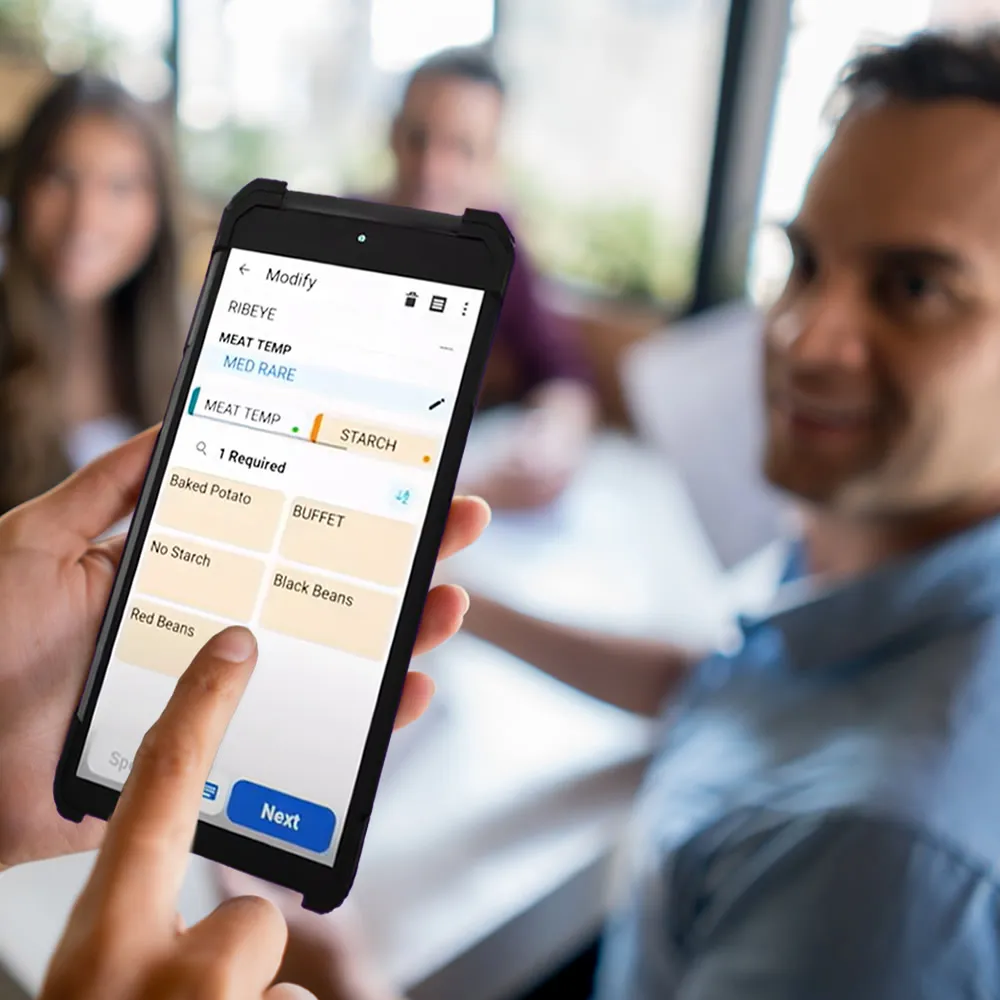You worked hard to transform your restaurant brand. Make it count.
When COVID-19 hit, restaurants very quickly had to begin transforming their restaurant operations to meet fluctuating and varying customer preferences. According to a study by Technomic, 50 percent of consumers don’t plan on eating in a restaurant anytime soon, some want to dine out, but in a safe way, and others are ready to get back to normal. And consumers have higher expectations, too—whether that’s a safe in-restaurant experience, easier and safer pick-up options or accurate delivery times.
The question is: Does your brand’s brick-and-mortar design and operational flow support this changing dynamic?
Re-defining the quick-serve and fast-casual experience
Traditionally, quick service and fast casual restaurants have been designed with two primary order and delivery points in mind—the counter and the drive-thru. The pandemic reduced that down to mostly one: the drive thru. For some operators, removing the in-restaurant ordering experience reduced throughput and impacted the overall customer experience. Still, there are ways to adapt and use this to your advantage.
Capacity and flexibility are key
As in-store ordering has moved to mobile and online, your customers want their experience to be quick, easy and safe. Restaurants with and without a traditional drive-thru experience will need to rethink the design of their parking lots and drive-thru.
- If you have a drive-thru, consider creating a Y-lane or an additional lane that can be versatile enough for either mobile pick-up orders or, when needed, to strategically deploy staff to take orders in these lanes during periods of heavy demand.
- If you do not have a drive-thru, consider creating designated parking spots for curbside pickup with digital signage to direct guests and delivery drivers to the right spaces to pick up their meals.
- Outdoor patios and parking spaces can also be enabled as ordering stations by displaying a QR code on tables or signage that guests can scan to quickly order and pay while maintaining social distancing and remaining outside the restaurant.
Re-thinking the dine-in experience
- During the pandemic, 92 percent of restaurant traffic moved to off-premise and restaurants simplified their operations to meet this demand. Moving forward, restaurant designs will need to become more adaptable. Footprints will get smaller and greater space will be devoted to your back of house with more orders being placed digitally. As you rethink your store design, layout and strategy, make sure your floor plans consider new safety and queuing needs, including expanded takeout, drive-through and curbside pickup space.
- If you do have guests ordering in your restaurant, enable them to order and pay by scanning QR codes on tables versus waiting in line at the counter.
- For guests who come inside your restaurant for digitally placed takeout orders, make sure you have signage that designates where guests and delivery drivers should go to pick up their food.
Confidently, digitally moving forward—for all types of restaurants
During the first half of the year, brands pieced together new operational flows and/or introduced new ordering methods just to survive. Now, digital transformation within the restaurant industry has significantly accelerated in a short period of time.
As brands step back and think more strategically about enabling a convenient and safe guest experience—inside and outside—of the restaurant, there are six underlying areas of technology that help reduce friction points and reshape the overall guest experience.
- Consumer marketing – For many brands that didn’t have a consumer data platform, loyalty and marketing engine in place prior to the pandemic, it’s been difficult to connect with their guests and keep them engaged with their brand. Using first- and third-party data to inform what offers and loyalty experiences you serve to your guests will be critical to maintaining and growing customer loyalty.
- Digital ordering points – Your guests want to order in any way, at any time that is convenient for them. Have a well-designed plan for how you enable them to place orders digitally through a variety of channels that are all directly integrated with your point of sale (POS) system—whether that’s through your own branded digital channels, third-party delivery marketplaces or other non-traditional channels.
- Intelligent digital signage – Whether in the drive-thru, at curbside pickup spots or in your restaurant, intelligent digital signage that contains the ability to recognize your guests and serve up relevant content will become more essential for driving throughput and increasing average check size.
- Kitchen operations – Increasing the number of ordering channels for your restaurant means that your kitchen must have the capacity and the technology to direct and route orders to the right production and expo stations for handling order accuracy and higher volumes of orders placed at any time.
- API-first point of sale, networking & Wi-Fi – If your priorities are to create new experiences and have the flexibility to continuously adapt your operations to industry and market forces, look for technology providers that have an API-first software architecture that enables you to test and deploy new technologies faster and easier with simplified maintenance and control.
- Payments – From mobile wallets to tap to pay capabilities, your guests will expect increased ease of payment both in-store and in the drive-thru. Make sure the payment devices you’re using are enabled for contactless payments for your guests and your employee’s safety—and to increase the speed of transactions.
Ultimately, there are many ways to transform your restaurant to improve your guest experience. From designing areas in your kitchen dedicated to fulfilling off-premise orders to enabling your dine-in guests to order on their devices at the table, there is no one-size-fits-all approach. As you re-evaluate your restaurant design and how to adapt to industry transformation, think holistically about your approach and make decisions that are aligned with both your short- and long-term strategic objectives. That way, you can successfully adjust your operations to adapt to meet the moment, regardless of unforeseen events or industry disruption.



